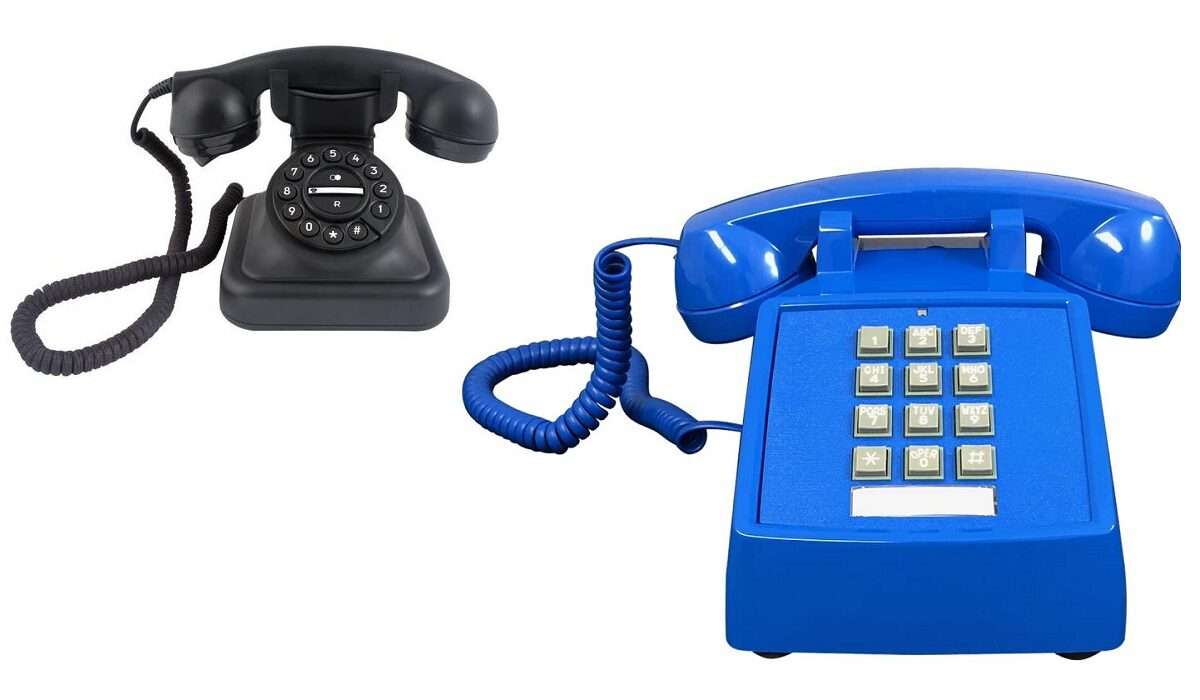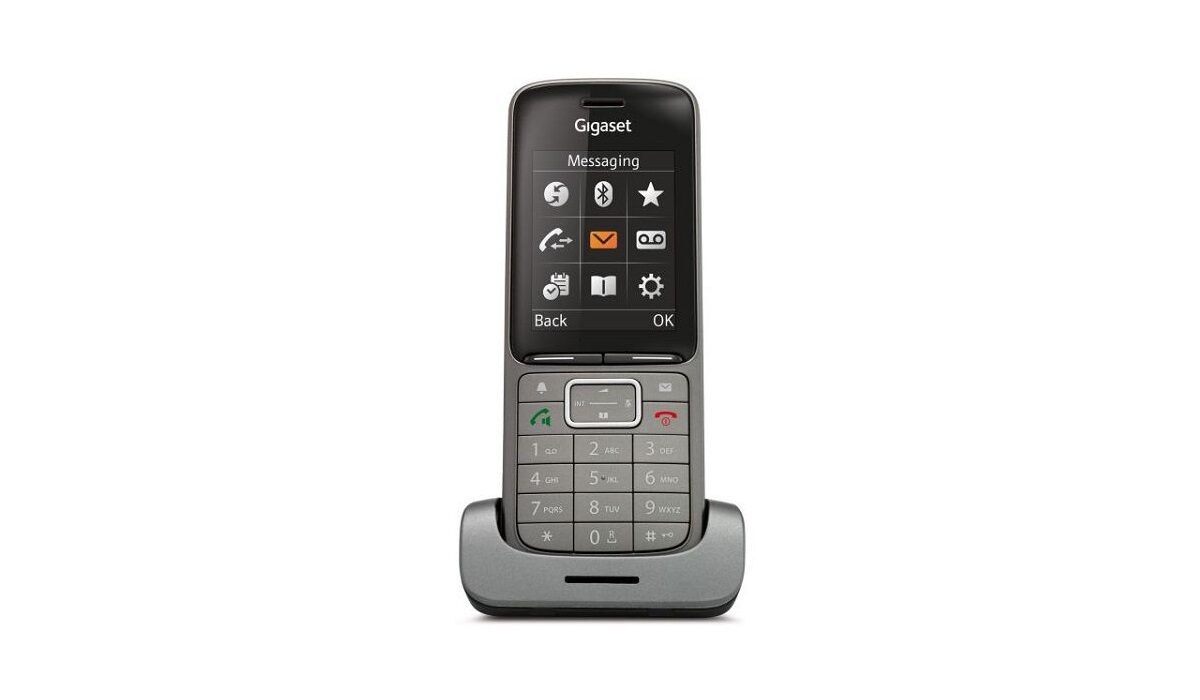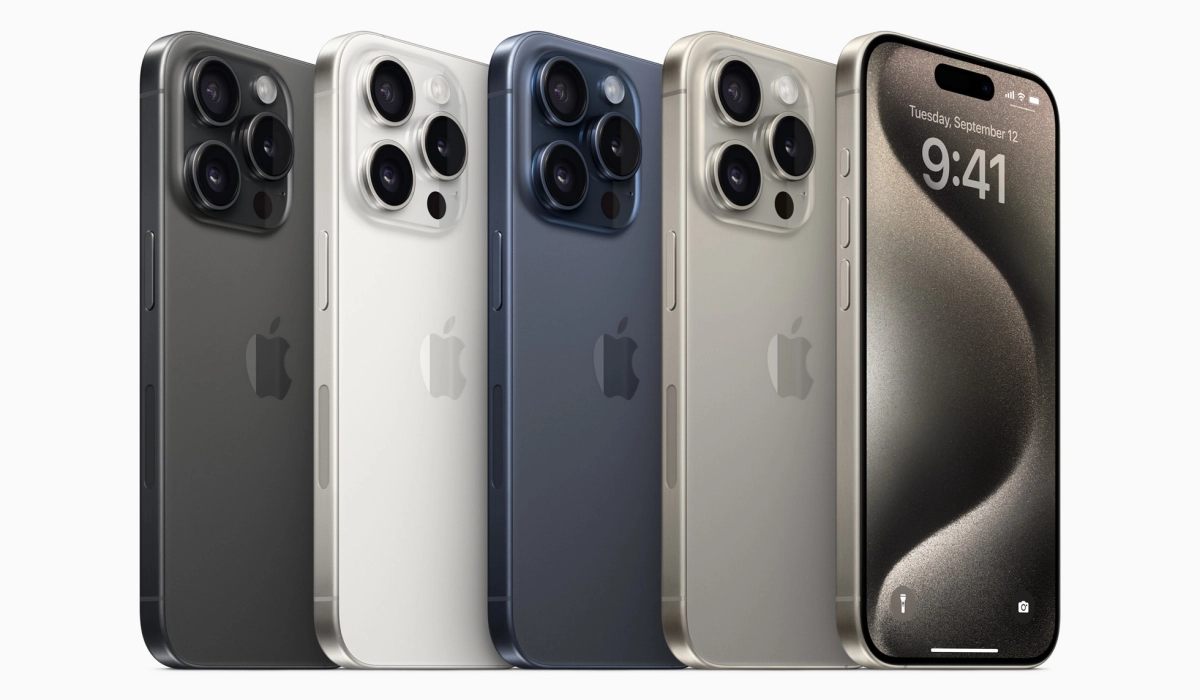The world of telephones was once dominated by desk phones that were made up of a base and a part that you would pick up and hold to your ear/head. That part you held to your head is what was originally called a handset.
The earliest telephones had rotary dials with the digits arranged in a circular layout that rotated by your finger action. To dial a number, you would place your finger on the digit you wanted and rotate the dial till it stopped, then release it and repeat the same process with each number till you were done. Tedious, I know. My wife and I communicated using one like that back when we were dating. Did I hear you call me old? I’m cancelling you.

Anyway, rotary dials later gave way to push button desk telephones (like the blue one in the image above). The push button desk phones were easier to use, of course. You simply push the buttons like you do on your smartphone today, but you still had to lift the handset to make calls.
Table of Contents
History and Evolution of Mobile Phone Handsets
The origin of the word handset is found in the design of early telephone devices. They were wall or table designs and had two parts – one that sat on a desk or hung on a wall, and the other that you woud lift up to your head to speak so you could speak and also listen. That section was called the handset. Of course, things changed with the arrival of mobile phones, as you have to pick up the whole phone instead. As such, in today’s world, a handset is a mobile phone of any kind.
Mobile phone handsets have come a long way since the first mobile phone was invented in 1973 by Martin Cooper. The first mobile phone was bulky, heavy, and expensive, and had limited functionality. It was not until the 1980s that mobile phones became more affordable and widespread.
In the early days of mobile phones, the handsets were large and heavy, with a limited battery life and minimal features. They were primarily used for making calls and sending text messages. However, as technology advanced, mobile phone handsets became smaller, lighter, and more feature-rich.
The introduction of the smartphone in the late 1990s and early 2000s marked a significant milestone in the evolution of mobile phone handsets. Smartphones combined the functionality of a personal digital assistant (PDA) with that of a mobile phone. They had touchscreens, cameras, and could connect to the internet, among other features.
Today, mobile phone handsets continue to evolve, with manufacturers constantly introducing new features and technologies. Some of the latest trends in mobile phone handsets include foldable screens, 5G connectivity, and improved camera technology.
Cellular or Cell Phones
I do not think that people in the United States of America and Canada generally refer to cell phones as “handsets”. You would rather hear them called “cellular” or “cell” phones. This holds for many South American countries as well. Sometimes, the phrase “wireless phone” is used as well.
Mobile Phones
The phrase, “mobile phone”, is more commonly used in countries like the United Kingdom (UK), much of Europe, Australia, and New Zealand.
In countries like Nigeria, Ghana, as well as in certain Asian countries, among others, quite a number of mobile phone users – perhaps mostly Gen X – still use the term, “handset”. However, you will find a mix of usage with other terms like “mobile phone” and “cell phone” here and there.
Handy, HandyPhones, or Cordless Phones
In China, Korea, Singapore, Malaysia, as well as in some European countries like Germany and the Netherlands, you will still hear some people call their mobile phones “handyphones”, “handy phones”, or just a “handy”. The phrase “cordless phones” is quite commonly used in Germany. And it is for good reason. In those places, a modern form of wireless telephones with the traditional two parts still exist. below is the image of a Gigaset handset sitting on the base. The handset is lifted to the head to take or make a call. Gigaset is an European mobile phone brand.

Handsets
The word, “handset”, is one of the many valid terminologies now used in referring to mobile phones in different places around the world. Being Gen X myself, I do not flinch or wonder when I hear someone say the word. In the early 2000s, it was a common word used for mobile phones when many of us first got introduced to them. It is doubtful that any Gen Y or Z individuals will be caught dead referring to a smartphone as a handset. They were born and grew up in the age of iPhones and Android smartphones, and would probably think that the word “handset” is funny.
Types of Mobile Phone Handsets
Smartphones
Smartphones are mobile phones that come with advanced features and functionalities. They are designed to offer users a wide range of applications and services. Smartphones are equipped with high-resolution touch screens, powerful processors, and advanced operating systems. They allow users to access the internet, send and receive emails, take high-quality photos and videos, and play games. Some popular smartphone brands include Apple, Samsung, Huawei, and Google.
Feature Phones
Feature phones are mobile phones that offer basic features and functionalities. They are designed for users who do not require advanced features such as internet access or high-quality cameras. Feature phones typically have physical keypads and small screens. They are less expensive than smartphones and are ideal for users who need a phone for making calls and sending text messages. Some popular feature phone brands include Nokia and Samsung.
Satellite Phones
Satellite phones are mobile phones that are designed to work in areas where there is no cellular network coverage. They use satellites to connect to the network and offer users the ability to make calls and send text messages from remote locations such as deserts, mountains, and oceans. Satellite phones are typically more expensive than other types of mobile phones and require a subscription to a satellite network. Some popular satellite phone brands include Iridium, Inmarsat, and Thuraya. There is a new generation of regular smartphones with satellite communications built-in.
Cutting Edge Trends in Mobile Phone Handsets
As technology continues to advance, there are several exciting trends emerging for mobile phone handsets. Here are a few of the most notable:
Foldable Screens
Foldable screens are already in use on some mobile phones, but they are expected to become more common in the coming years. These screens allow for larger displays without increasing the overall size of the phone. As the technology improves, it is likely that foldable screens will become even more durable and affordable.
5G Connectivity
5G connectivity is the next generation of mobile network technology. It promises faster download and upload speeds, lower latency, and more reliable connections. As 5G networks become more widespread, mobile phone manufacturers are likely to release handsets that are optimized for this new technology.
Improved Cameras
Cameras have become a key selling point for many mobile phones, and this trend is expected to continue. Manufacturers are likely to continue to improve the quality of their cameras, with features such as optical zoom and improved low-light performance becoming more common.
Augmented Reality
Augmented reality (AR) is a technology that overlays digital information onto the real world. It has already been used in mobile phone apps such as Pokemon Go, but it is expected to become more widespread in the coming years. Mobile phone manufacturers are likely to release handsets that are optimized for AR, with improved sensors and processing power.
Biometric Security
Biometric security, such as fingerprint and facial recognition, has become increasingly common on mobile phones. In the future, it is likely that this technology will become even more advanced, with features such as iris scanning and voice recognition becoming more common. This will help to improve the security of mobile phones, making them more difficult to access without authorization.

Last Words
The world is quite a diverse place, and there is a colourful mix of terminologies to enjoy, if you pay attention. Some of these terms are fading or dying out faster than others. But, if you hear anyone call their smartphones, a “handset”, calm down and smile; they are not coo-coo or anything of the sort. They just likely grew up in a different dispensation from you.